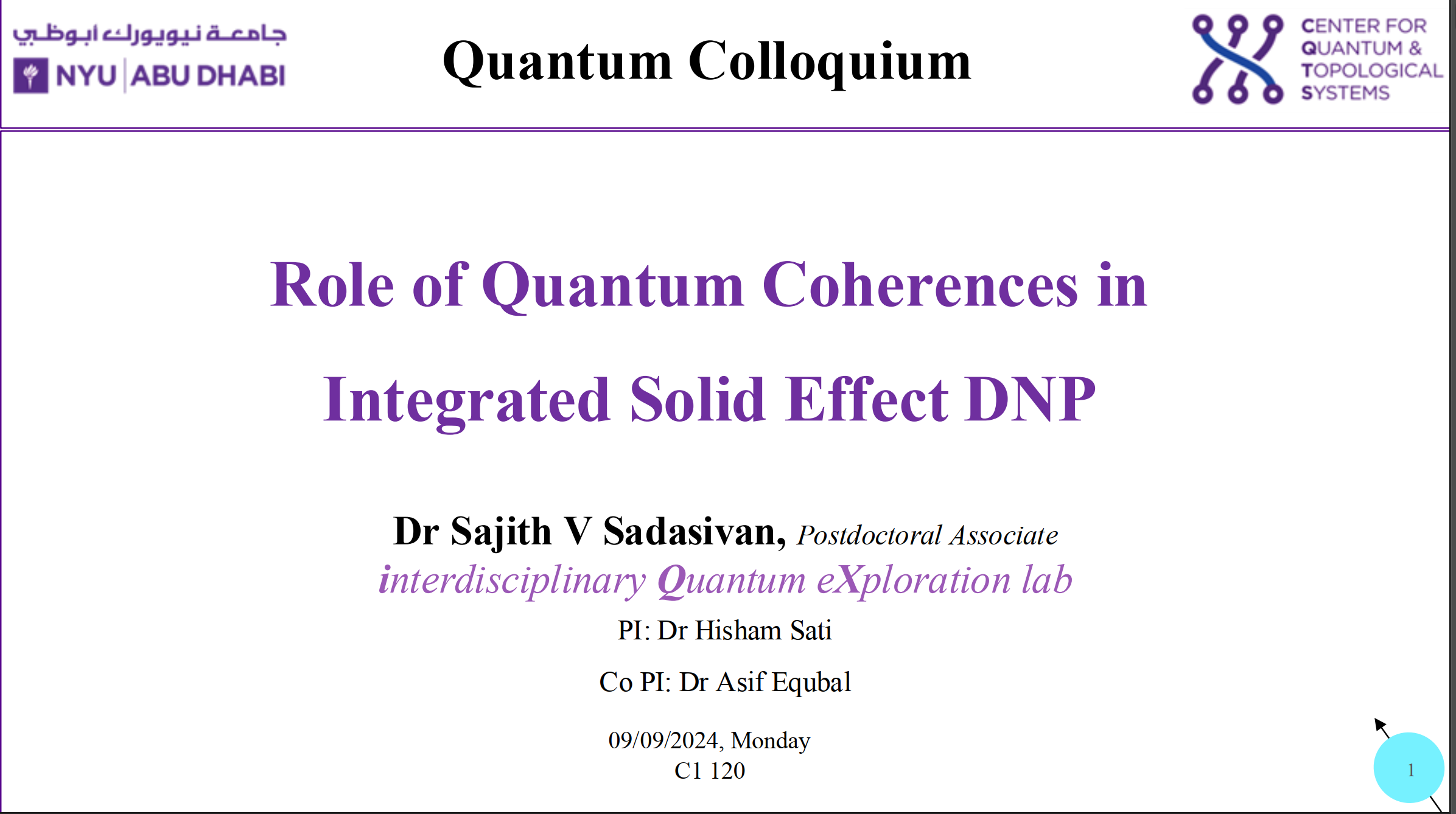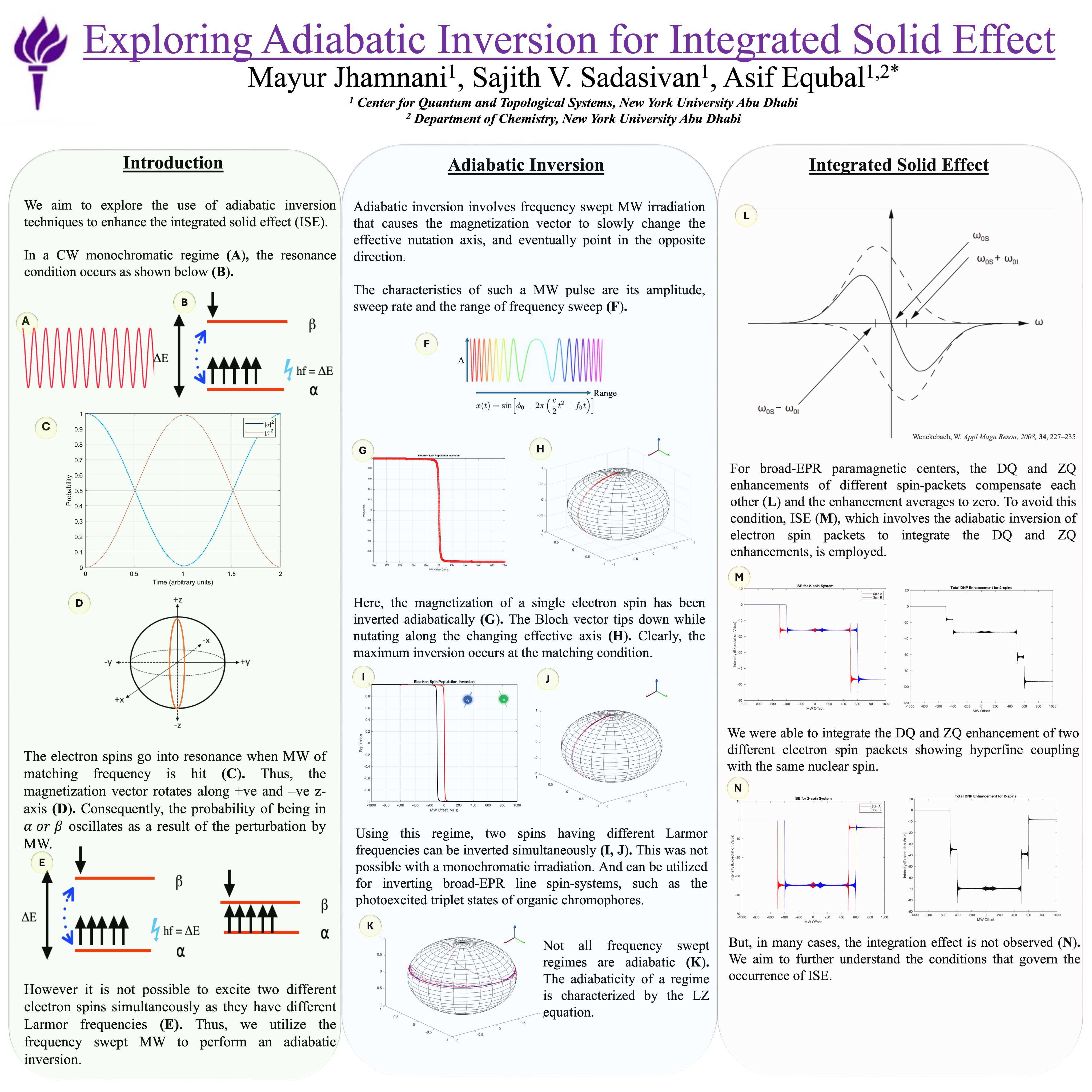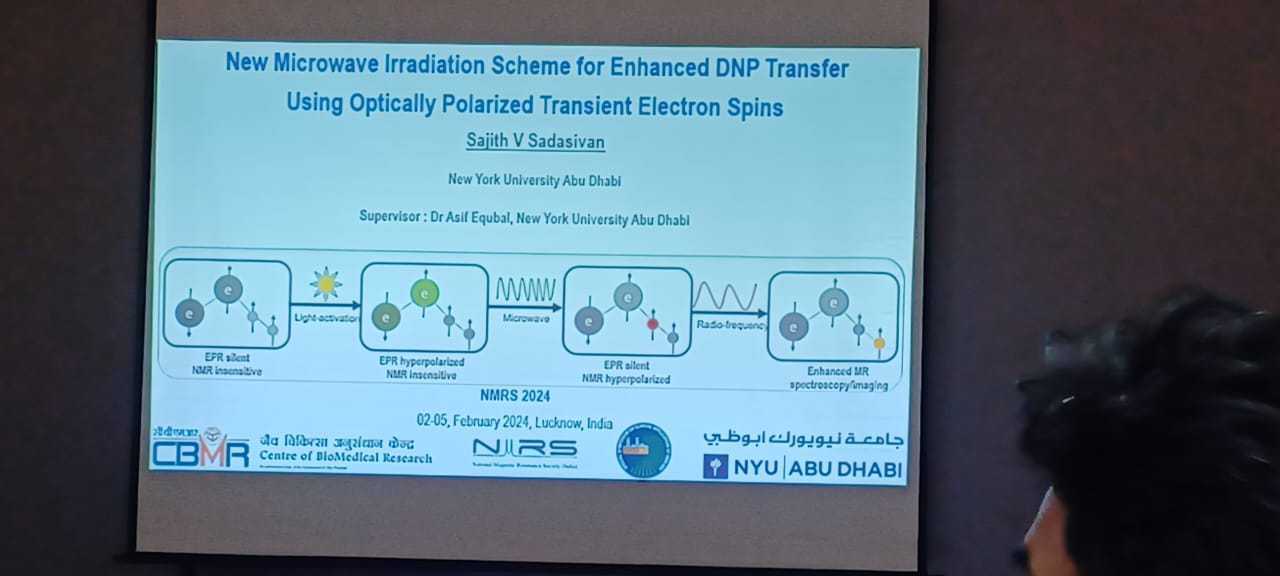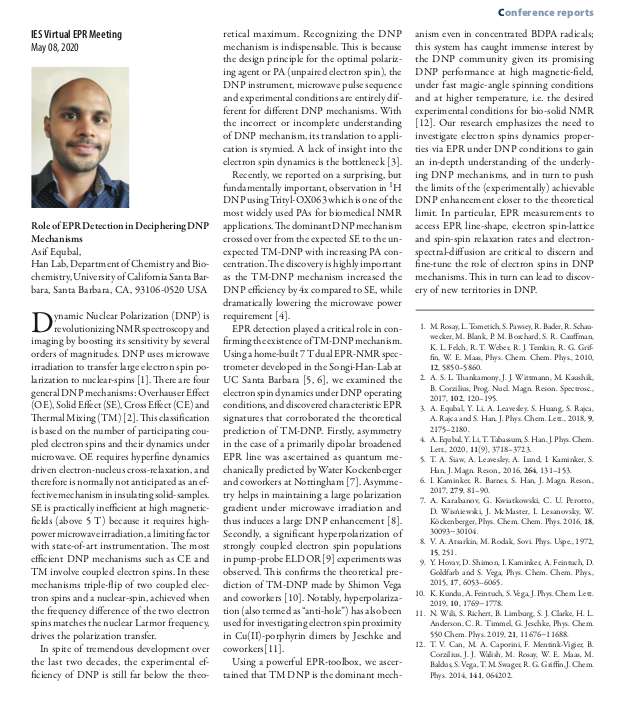Organizers: Centre of Biomedical Research (CBMR), Lucknow in association with Dept. of Radiodiagnosis, SGPGIMS, Lucknow ERA's Lucknow Medical College and Hospital, ERA University, Lucknow
Oral presentation: Title: New Microwave Irradiation Scheme for Enhanced DNP Transfer Using Optically Polarized Transient Electron Spins
Sajith V Sadasivan1, Asif Equbal1,2
1Center for Quantum and Topological Systems, New York University Abu Dhabi, United Arab Emirates, 2Department of Chemistry, New York University Abu Dhabi, United Arab Emirates.
ABSTRACT
Nuclear Magnetic Resonance (NMR) provides a profound insight into atomic-scale molecular structures and dynamics. However, lack of sensitivity due to low spin polarization is a major limiting factor in realizing the full potential of NMR. Dynamic Nuclear Polarization (DNP) addresses this challenge by enhancing signal intensity through polarization transfer from electrons to nuclear spins. [1] The conventional DNP method, utilizing paramagnetic centres in the form of free radicals and microwave irradiation, has significantly improved NMR sensitivity. Nevertheless, inherent limitations
persist, particularly the relatively low electron spin polarization at thermal equilibrium at ambient temperature, which is orders of magnitude lower than that of optical transitions.
The emerging concept of light-activated DNP introduces a chromophore where an optical transition induces a substantial nonequilibrium polarization of electron spins [2]. This innovative approach, focusing on the excitation of the triplet state of organic chromophores as a polarizing agent, has demonstrated enhanced NMR sensitivity even at room temperature [3]. Previous research has highlighted the crucial role of the integrated solid effect (ISE) in driving polarization transfer from the excited triplet electron to the coupled nuclei [4]. However, a comprehensive exploration of electron spin dynamics under ISE has been lacking. This study delves into the electron spin dynamics during ISE to discern the interplay of the magnetic field sweep rate and excited state (triplet) lifetime on DNP transfer efficiency. Inspired by solid-state NMR of quadrupolar nuclei susceptible to radiofrequency (RF) bandwidth, we have investigated (both analytically and numerically) the spin physics of the broad Electron Paramagnetic Resonance (EPR) spectrum of electron spins in the triplet state. In particular, our development of Arbitrary Waveform Generator (AWG) DNP schemes aims to maximize DNP transfer from broad and short-lived triplet electrons. The AWG approach facilitates the utilization of a larger number of electron spin packets compared to Continuous Wave (CW) methods. This study not only holds the potential to boost sensitivity in room temperature NMR but also promises to make Magnetic Resonance Imaging (MRI)-DNP feasible, given the biocompatibility of the chromophores currently under development.
References:
[1]. Ardenkjær-Larsen, Jan H., et al., Proceedings of the National Academy of Sciences
100.18 (2003): 10158-10163.
[2]. King, Jonathan P., et al., Nature communications 6.1 (2015): 8965.
[3]. Fujiwara, Saiya, et al., Journal of the American Chemical Society 140.46 (2018): 15606-15610.
[4]. Nishimura, Koki, et al., Chemical Communications 56.53 (2020): 7217-7232.
Keywords: Dynamic Nuclear Polarization; Light-Activated DNP; Triplet Excitation; Integrated solid
effect.





